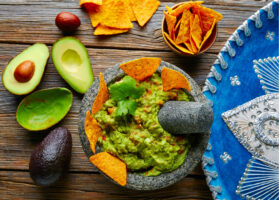Mexican mango: U.S. consumption and trade on the rise
Overview of mangos from Mexico in the U.S. market, complemented by charts from Agronometrics. Original published on October 4, 2023.
Mexican mango continues its successful stride through the U.S. market, which accounts for 97% of overall shipments. The ongoing season is projected to have a 2% uptick in volume year-on-year.

Source: USDA Market News via Agronometrics.
(Agronometrics users can view this chart with live updates here)
Mexico ships two main mango varieties to the U.S., Tommy Atkins, with a 61% share of total shipments, and Keitt, with a 38% share.
The National Mango Board (NMB) has been instrumental in increasing consumption, as it educates U.S. consumers about the culture, flavor, and nutrition of this superfruit.
In line with this goal, the Mexican mango sector gathered Sep. 23 for its first Digital Mango Forum. NMB executive director Ramon Ojeda indicated ongoing efforts to supply high quality, tasty mangos to maintain Mexico’s market position.
Ojeda mentioned that mango consumption per capita in the U.S. has increased to about 3.7 pounds per person.
The actions developed by the institution have been reflected in the price per box, “in 2005 the average was 4.21 dollars and went to 5.78 dollars per box of 4 kilograms in 2022.”
Eduardo Castillejos, president of the Mango Exporters Association of Mexico (EMEX), explained that the industry is currently working on three export schemes, one with hot water treatment and inspection at origin by the USDA and AFIS. “Approximately 75% of the volume of mango exported from Mexico comes from this modality.
“There are also other options such as other phytosanitary categories, such as the free zone in the north of Sinaloa and irradiated mangoes,” Castillejos said.
Daniel Ibarra, president of the Association of Mango Producers of northern Sinaloa, says, “In 2023 we had very high prices, precisely because it is linked to the behavior of the volumes, and the projected volume dropped drastically, which led to an increase in the selling price. Even when there is an increase in volume in week 30, there is still a price increase because there is already an established demand.”
The News in Charts is a collection of stories from the industry complemented by charts from Agronometrics to help better tell their story.
Access the original article with this (Link)






